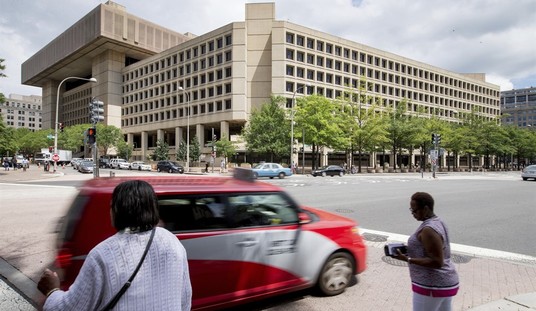On Dec. 26, 2018, every American who owned a bump stock, a rifle accessory that facilitates rapid firing, was suddenly guilty of a federal felony punishable by up to 10 years in prison. That did not happen because a new law took effect; it happened because federal regulators reinterpreted an existing law to mean something they had long said it did not mean.
As anyone who has read the Constitution or watched Schoolhouse Rock could tell you, this is not how laws are supposed to be made. The Trump administration's bump stock ban, which is at the center of a case that the U.S. Supreme Court recently agreed to hear, raises the question of whether unelected bureaucrats can evade the constitutionally prescribed legislative process by unilaterally criminalizing previously legal conduct.
As the Bureau of Alcohol, Tobacco, Firearms, and Explosives (ATF) explained when it imposed the ban, bump firing is "a technique that any shooter can perform with training or with everyday items such as a rubber band or belt loop." It involves pushing a rifle forward to activate the trigger by bumping it against a stationary finger, then allowing recoil energy to push the rifle backward, which resets the trigger.
As long as the shooter maintains forward pressure and keeps his finger in place, the rifle will fire repeatedly. The ATF's rule bans stock replacements that assist this technique by allowing the rifle's receiver to slide back and forth.
Between 2008 and 2017, the ATF repeatedly said such products were perfectly legal as long as they did not contain a spring or other mechanism that pushes the rifle forward after recoil. But in March 2018, the agency proposed a new rule declaring that rifles equipped with bump stocks qualified as machine guns, making the accessories illegal.
Recommended
Why did the ATF change its mind? In October 2017, a gunman murdered 60 people at a country music festival in Las Vegas, and it turned out that some of his rifles were fitted with bump stocks.
The massacre inspired several bills aimed at banning bump stocks. Noting that "the ATF lacks authority under the law to ban bump-fire stocks," Sen. Dianne Feinstein (D-Calif.) said "legislation is the only answer."
President Donald Trump, by contrast, maintained that new legislation was unnecessary. After he instructed the ATF to ban bump stocks by administrative fiat, the agency bent the law to his will.
Federal law defines a machine gun as a weapon that "automatically" fires "more than one shot" by "a single function of the trigger." A bump-fired rifle shoots just one round for each function of the trigger, and it does not fire "automatically" unless you ignore the ongoing human intervention required to repeatedly activate the trigger.
That is what the ATF did. It also read "a single function of the trigger" to mean a single pull of the trigger (not a bump!). Noting that "the law has not changed," Feinstein warned that the ATF's "about face," which relied on "a dubious analysis claiming that bumping the trigger is not the same as pulling it," would invite legal challenges.
In response to those challenges, federal appeals courts have disagreed about whether the definition of machine guns is ambiguous and whether the ATF's new interpretation of it is reasonable. Yet the ATF insists that bump stocks have always been illegal, although no one (including the ATF) realized that until 2018.
The implication is that bump stock producers and owners were inadvertently committing felonies for years. Once the ATF belatedly recognized what it now says the law plainly requires, those accidental felons avoided criminal charges only thanks to prosecutorial discretion. The ATF graciously extended that forbearance until March 26, 2019.
Such capricious invention of crimes is inconsistent with the rule of law and the separation of powers. Neither the Las Vegas massacre nor Trump's reaction to it changed the law. The Supreme Court should not let the ATF pretend otherwise.

























Join the conversation as a VIP Member